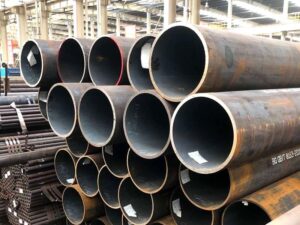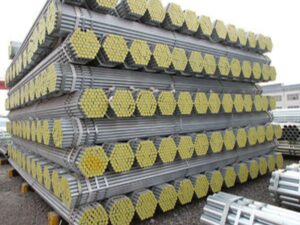Description
The Unsung Heroes of Power: Understanding Hydraulic Pipes
Hydraulic systems are the backbone of countless industries, powering everything from construction equipment and aircraft to manufacturing machinery and even your car’s brakes. And at the heart of these powerful systems lie the unsung heroes: hydraulic pipes. These robust conduits are essential for transferring pressurized fluid, the lifeblood of any hydraulic operation, from the pump to the actuators. Understanding the nuances of hydraulic pipes – their types, materials, and key considerations – is crucial for ensuring system efficiency, safety, and longevity.
What Exactly Are Hydraulic Pipes?
In their simplest form, hydraulic pipes are durable tubes designed to contain and transport pressurized fluid, typically oil or synthetic fluid, within a hydraulic system. They connect the system’s components, such as pumps, valves, cylinders, and motors, enabling the transmission of force and motion. Unlike standard pipes used for water or gas, hydraulic pipes are specifically engineered to withstand extremely high pressures and harsh environments.
The Critical Importance of Material Selection:
The material used in hydraulic pipes is paramount, directly impacting their pressure rating, corrosion resistance, and overall lifespan. Common materials include:
- Steel: A popular choice due to its high strength and affordability. However, untreated steel is susceptible to rust and corrosion, making it more suitable for enclosed or well-maintained systems.
- Stainless Steel: Highly resistant to corrosion, making it ideal for harsh environments and applications involving aggressive fluids. Stainless steel offers excellent durability but comes at a higher cost than steel.
- Rubber: Flexible rubber hoses are used in applications where movement and vibration are present. They often incorporate braided steel reinforcement for added strength and pressure resistance.
- Thermoplastic: Offering excellent chemical resistance and flexibility, thermoplastic hoses are lightweight and suitable for lower-pressure applications.
The selection of the appropriate material depends on a variety of factors, including the operating pressure, fluid compatibility, temperature, and environmental conditions. Failing to choose the right material can lead to premature failure, leaks, and potentially dangerous situations.
Key Considerations for Selecting Hydraulic Pipes:
Beyond material selection, several other factors play a crucial role in choosing the right hydraulic pipes for a specific application:
- Pressure Rating: The pipe must be able to withstand the maximum operating pressure of the hydraulic system with a significant safety margin. Exceeding the pressure rating can lead to catastrophic failure.
- Size and Diameter: The inside diameter of the pipe influences the fluid flow rate and pressure drop. A pipe that’s too small can restrict flow, leading to inefficiencies and overheating.
- Bending Radius: The minimum bending radius of the pipe needs to be considered, particularly when routing the pipes in tight spaces. Exceeding the minimum bending radius can damage the pipe and compromise its integrity.
- Fittings and Connections: The fittings used to connect the pipes must be compatible with the pipe material and be capable of withstanding the operating pressure. Proper installation and tightening of fittings are essential to prevent leaks.
- Environmental Factors: Exposure to extreme temperatures, corrosive chemicals, or UV radiation can degrade the pipe material and shorten its lifespan.
The Importance of Regular Maintenance and Inspection:
Like any component in a hydraulic system, hydraulic pipes require regular maintenance and inspection to ensure optimal performance and safety. Regular visual inspections can help identify signs of wear and tear, such as cracks, dents, and corrosion. Pressure testing can also be performed to verify the integrity of the pipes.
Any damaged or worn pipes should be replaced immediately to prevent leaks, system failures, and potential accidents. A proactive approach to maintenance and inspection can significantly extend the lifespan of hydraulic pipes and safeguard the overall hydraulic system.
Conclusion:
Hydraulic pipes are the vital arteries of any hydraulic system, responsible for delivering the pressurized fluid that powers countless applications. While often overlooked, understanding the nuances of material selection, pressure ratings, and proper maintenance is crucial for ensuring the efficiency, safety, and longevity of these critical components. By carefully considering these factors, engineers and operators can ensure that their hydraulic systems operate reliably and effectively for years to come. The next time you see a powerful piece of machinery in action, remember the unsung heroes within: the hydraulic pipes, silently working to make it all possible.











Reviews
There are no reviews yet.